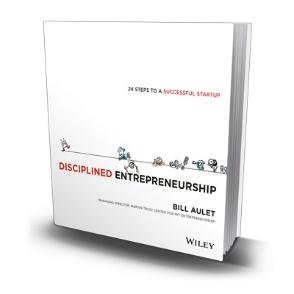How we changed our business trajectory in 6 weeks
14 Jul 2014
How we applied startup methodology to re-establish our business proposition with stunning effect

In this post I'll share how we applied startup methodology to re-establish our business proposition with stunning effect. These principles will help mature businesses too.
"So Brett, what does Leaderkit do?" (CEO of $50M company)
"We make software that helps senior management keep their promises" (Brett)
"You what? You mean you... you what?" (CEO)
So started my conversation with a CEO of a very successful ICT business at an NZ software association dinner. It continued for an hour and a half, leading ultimately to a Leaderkit pilot for his NYSE listed US parent company and his becoming an advocate, advisor and investor in our business.
The roots of this success lie in Leaderkit hitting an impasse in late 2013.
|
|
The problem
At the end of 2013 Leaderkit had been operating for 2 ½ years.
While we had some great customers and some big fans on board, sales were harder and took longer than I expected. Something wasn't right.
So at the start of this year we embarked on a process of rebuilding our value proposition and go-to-market using the MIT resource; disciplined entrepreneurship.
|

|
The solution
Disciplined Entrepreneurship is written by Bill Aulet, a serial entrepreneur and senior lecturer at the MIT Sloan School of Management. His book is a toolbox and handbook for startup entrepreneurs.
We worked through the 24-step framework over 6 weeks, developing theories and then testing them in the market before returning to the next step.
The stages are organised around simple themes:
- Who is your customer?
- What can you do for your customer?
- How does your customer acquire your product?
- How do you make money off your product?
- How do you design and build your product?
- How do you scale your business?
By the end of the process, we were getting real breakthroughs in the market.
|

|
Benefits we've accrued over the past six months
- Tipped my business partner from trial to committing to a 2 year sweat equity deal
- Securing pilots with corporate customers like Endace and the Warehouse Group
- One of my customer CEOs offered to advise and invest in our business
- The cumulative effect of the above has begun to open doors with national firms and industry bodies like a big CA, Institute of Directors and NZTE
Six big lessons we learned
- We hadn't segmented our customers clearly and were missing opportunities by not distinguishing different buying needs for medium and large enterprise.
- Getting really clear on the customer's real problem lead us to flip our sales pitch – leading with execution instead of strategy – which seemed a bit counter-intuitive but actually reflected our market's most pressing need.
- Getting very specific about the nature and size of our beachhead market, really forced us to consider if we could actually establish a viable pilot business. The specificity required was scary but ultimately very encouraging.
- Documenting the customer's full life cycle use case give us a much better way to think about the value we delivered and both improved our offering and added a revenue line. See our new mandatory induction services.
- Calculating metrics like life time value (LTV) and Cost of Customer acquisition (COCA) have given us a powerful framework for creating a sustainable business. I'd now use these concepts in any business and especially for any product development.
- The scientific approach advocated in lean startup is a very clever way to fast-track business innovation and product development for the least cost and in the least time.
When to apply this to your business
It's hard to cut precious time out of your schedule to re-examine product – market fit.
Really hard.
It's so much easier to do more of the same in the hope of better results.
But I hope our example illustrates the upside of building strength into your business foundations.
If any of your products are under-performing, I'd consider the lean startup toolset as an option for turning things round.
Great resources
|
|
Previous: What is Strategy?
Next: Psst - want to know how your peers do annual planning?



